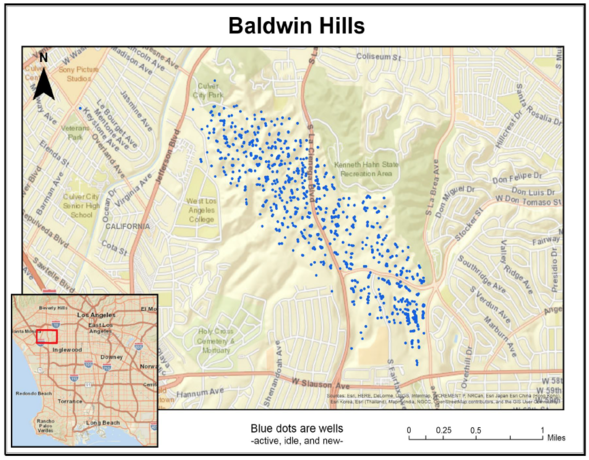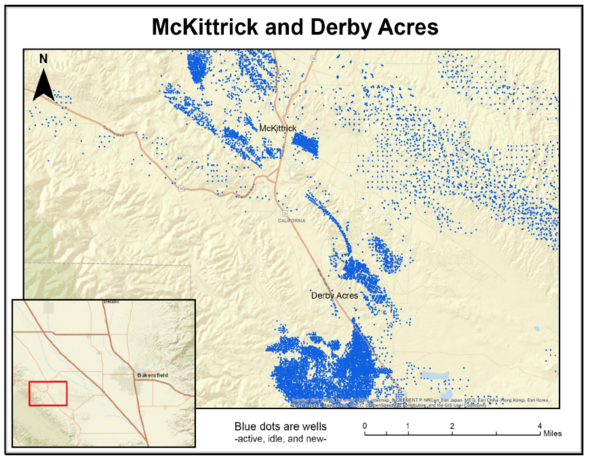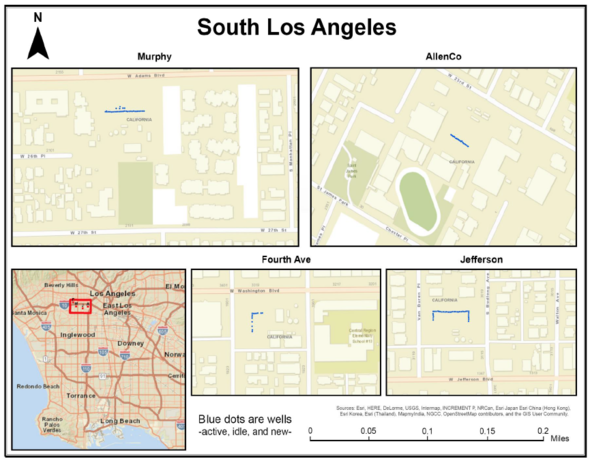|
SACRAMENTO – As
part of the state’s ongoing commitment to clean the air in communities most
impacted by pollution, today the California Air Resources Board announced
the selection of four communities for a new program to monitor air
quality near oil and gas extraction facilities.
It is well
known that short and long-term exposure to air pollutants can contribute to
negative health outcomes, including asthma, cardiovascular disease, and in some
cases, cancer. Limited information exists, however, on how oil and gas
extraction facilities affect air quality in neighboring communities.
The Study of
Neighborhood Air near Petroleum Sources (SNAPS) program was established to help
fill the gap using a focused community-level approach. The selected communities
will host mobile air monitoring units to identify and measure pollutants of
concern over several months to help inform efforts to protect public health
from environmental hazards.
“Many
Californians live in communities near oil and gas facilities – but we know very
little about the impact of these facilities on their neighbors’ health,” said
Chair Mary D. Nichols. “We need up-to-date information to assess whether
existing standards and regulations are effective, and to lay the groundwork for
any needed improvements.”
Discussions on
the SNAPS program started in November 2017 when CARB began holding
public workshops, community meetings and tours of neighborhoods near oil and
gas facilities. The process resulted in 56 candidate communities that were
evaluated using eight metrics including CalEnviroScreen score, air pollution
levels, density of oil and gas wells and community engagement, among others.
The four
selected communities are located in the historic oil regions of the south San
Joaquin Valley and Los Angeles County:
-
Lost
Hills, Lost Hills Oil Field, Kern County
-
McKittrick
and Derby Acres, McKittrick Oil Field and Midway-Sunset Oil Field, Kern County
-
Baldwin
Hills, Inglewood Oil Field, Los Angeles County
-
South
Los Angeles, Las Cienegas Oil Field, Los Angeles County
These
communities are diverse in size and population, reflecting many other oil and
gas communities around the state. The study involves a 3-4 month monitoring
campaign in each area including air monitoring trailer installation and
community meetings to gather ideas, hear concerns, foster ongoing feedback,
communicate results and discuss solutions.
“CARB recently
adopted more stringent regulations requiring enhanced inspection of oil and gas
operations including pump jacks. The rules require the use of technologies
including chemical sniffers to better pinpoint and repair any leaks that are
identified,” said Executive Officer Richard W. Corey. “The SNAPS program
will complement the regulation to better ensure oil and gas operations that
impact nearby communities are identified and addressed.”
SNAPS also
complements the Community Air Protection Program (CAPP) under AB 617 by
providing additional capacity to evaluate the effects of oil and gas facilities
in particular. AB 617 requires CARB to select communities heavily impacted by
air pollution for focused actions including setting up community air pollution
monitoring systems, developing emissions reductions plans, or both. On
September 27, the CARB Board will consider approving staff’s first ten community recommendations pursuant
to AB 617. Together, the two efforts will provide focused, community-level
action in fourteen of the state’s most polluted areas.

 
|